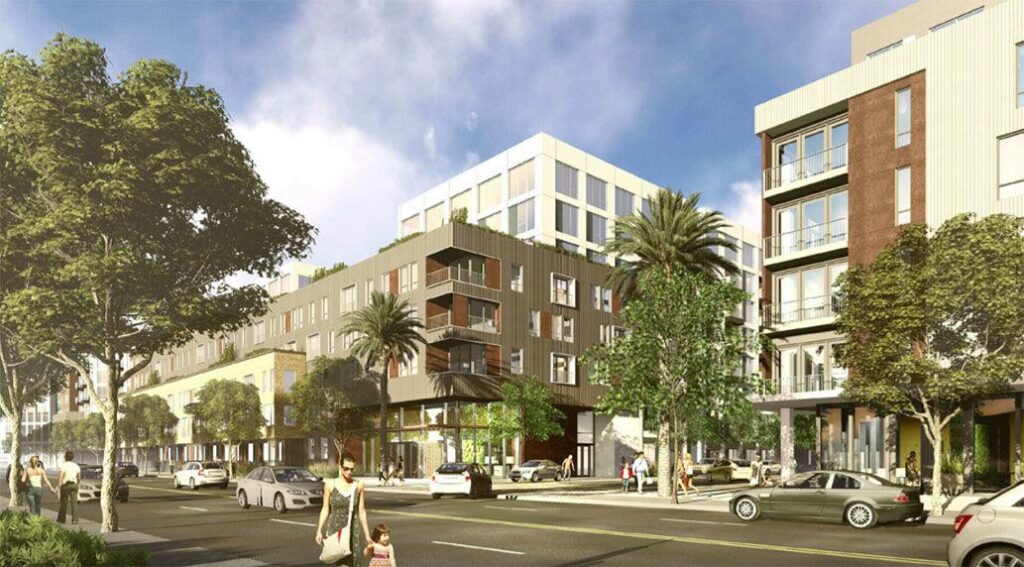Election Reflections
Much attention this election cycle was focused on the Presidential race–and for good reason. Fortunately, American voters saw fit to fire NIMBY in-chief Donald Trump. In contrast to Trump’s divisive rhetoric about “saving” the suburbs from affordable housing, President-elect Biden’s housing plan includes policies to eliminate exclusionary zoning and increase the supply of housing, Federal leadership is vital to solving the housing shortage and we look forward to a new administration’s work on federal housing policy. But how did things shake out locally?
More YIMBYs In Sacramento
Peninsula for Everyone and South Bay YIMBY are pleased to welcome back all of our incumbent state legislators. Housing champion Scott Wiener won reelection for state Senate against a compelling challenger while other pro-housing incumbents including Assemblymembers Kevin Mullin, Evan Low, and Marc Berman cruised to victory.
We’re also thrilled to welcome new members to the state legislature, including YIMBY-backed Alex Lee, who won his race for AD25, becoming the first Gen Z and first openly bisexual lawmaker in California history.
Santa Clara County Supervisor Dave Cortese was endorsed by South Bay YIMBY and won a very competitive race against fellow Democrat Ann Ravel to fill Senator Jim Beall’s Senate District 15 seat. The Senate District 13 race was won handily by Josh Becker, who defeated a NIMBY Republican to win the seat vacated by former Senator Jerry Hill.
Electing state legislators who will advance state-level housing solutions is crucial to success for our region, as we cannot expect the most exclusionary communities to dismantle segregation on their own.
Local YIMBY Incumbents Triumph
Pro-housing incumbents also fared extremely well in local races: All of the 12 incumbent candidates endorsed by Peninsula for Everyone will be returning for another term.
Redwood City Councilmember Alicia Aguirre won her re-election bid against two challengers in a newly districted race. Despite being a top vote-getter in previous at-large elections, Aguirre’s seat appeared to be at risk, as her new district skewed wealthier and whiter than the rest of the city. Despite demographics, Alicia won alongside a diverse group of candidates in other districts–Michael Smith, Jeff Gee, and Lisette Espinoza-Garnica–ensuring that the new City Council will be more representative of the community it serves.
Amourence “Amo” Lee, an appointed incumbent candidate in San Mateo, won her first election, despite significant spending from a landlord PAC on behalf of her opponent. Amo’s win ensures a pro-housing majority as San Mateo completes their General Plan process.
Other pro-housing incumbent winners include Juslyn Manalo for Daly City City Council, John Goodwin for Colma City Council, Mark Nagales for South San Francisco District 2, Rico Medina for San Bruno Mayor, Michael Salazar for San Bruno City Council, Sam Hindi for Foster City City Council, Davina Hurt and Tom McCune for Belmont City Council, and Lisa Gauthier and Carlos Romero for East Palo Alto City Council.
In Mountain View, we also saw the return of former electeds Pat Showalter and Sally Lieber. We’re glad to have their leadership again and look forward to a more progressive and pro-housing Mountain View.
NIMBY Incumbents Ousted
Whereas pro-housing incumbents sailed to victory, several prominent housing opponents lost their seats. Cupertino Mayor Steven Scharf, who declared in his 2019 State of the City address that he wanted to “build a wall around Cupertino and make San Jose pay for it,” was fortunately defeated in his re-election bid. Scharf will be replaced by YIMBY-endorsed Hung Wei. And in Foster City, Patrick Sullivan edged out incumbent NIMBY Catherine Mahanpour, helping to pump the brakes on an emergent local anti-housing insurgency.
Further north in South San Francisco, 18-year incumbent Rich Garbarino, lost to YIMBY-endorsed James Coleman, the youngest ever South City Councilmember at age 21. Because Garbarino served on the Association of Bay Area Government’s Executive Committee, his defeat means that this influential seat could be filled by a more pro-housing representative.
New Houser Councilmembers
Although it was a particularly strong year for local incumbents, many YIMBY newcomers were elected this year. A total of 13 YIMBY fresh faces were elected this year from South San Francisco all the way down to Gilroy.
In Menlo Park, Jen Wolosin won despite a NIMBY smear effort. Jen’s win will flip the council to a majority that is interested in advancing equity within Menlo Park. Alysa Cisneros won her Sunnyvale District race decisively and will be joined by fellow newcomer Omar Din. Sergio Lopez also won in his hometown of Campbell. In Santa Clara, Suds Jain and Anthony Becker defeated incumbents to join the City Council. And down in Gilroy, South Bay YIMBY member and firefighter Zach Hilton won alongside labor leader Rebebca Armendariz.
In San Jose, YIMBY and labor-backed David Cohen defeated incumbent Lan Diep, flipping the City Council majority from the Chamber of Commerce to labor. We’re hopeful that the new City Council of the Bay Area’s most populous city will advance policies like opportunity housing, which would allow the creation of small “plexes” in neighborhoods that previously allowed only standalone houses.
Mixed Bag for Ballot Propositions
2020 was a disappointing year for ballot propositions at the state and local levels. One bright spot was regional Measure RR, which provided a dedicated source of funding for Caltrain as the transit system was in danger of shutdown due to dramatic declines in ridership during shelter-in-place. Measure RR earned over two-thirds of the vote in Santa Clara, San Mateo, and San Francisco counties, ensuring that the transit backbone of the peninsula stays on track.
Other local measures had disappointing results. Voters in Mountain View supported Measure C, which restricts RV parking on streets and will likely result in the displacement of many Mountain View vehicle dwellers. Activists are now working to ensure that vehicle dwellers are not harmed as this measure is enforced.
In San Mateo, forces for maintaining exclusion prevailed as Measure Y, which limits heights and density, was passed with the thinnest of margins: only 42 votes. In the end, this outcome may backfire on Measure Y proponents, as San Mateo is still required to identify sites to meet regional housing requirements but because bigger, denser buildings near transit will be prevented, single-family neighborhoods are likely to be upzoned.
At the state level, ballot propositions that would have been the most impactful in advancing equity were rejected by the voters. Proposition 15, which would have removed property tax breaks for big businesses to provide needed funding to schools and communities failed in a close race. Prop 16, which would have ended California’s ban on affirmative action fell short. And Prop 21, which would have ended unjust restrictions on localities’ ability to implement rent control also failed. We’re hopeful that future legislative and electoral cycles can reverse this trend and help move our region in a more equitable and sustainable direction.


